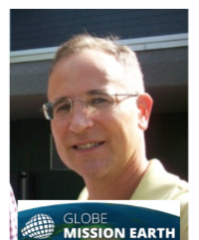Community Blogs
Community Blogs
Discover how the GLOBE community is engaging in all things GLOBE through the community blog posts below.
Learn how to create a GLOBE community blog post.
Filter By:
Blogs List
We have had a great start to our 2015 Surface Temperature Field Campaign. We are off to a quick start with 16 schools reporting since December 1, 2015. There are a number of other schools that collected data in November. I hope they are able to collect observations in December as well. Since November 1, 8 countries have reported data and 5 states within the United States. If we look at the number of observations since December 1, Main Street School in Norwalk, Ohio has the most observations. Below, I’ll talk about how El Nino is affecting the temperatures in the United States.
I noticed ...
Read More »
Posted in:
Field Campaigns:
SURFACE TEMPERATURE
GLOBE Working Groups:
SCIENCE WORKING GROUP
December 1 to December 31, 2015
The GLOBE Program will host the annual surface temperature field campaign from December 1 to December 31, 2015. This is a great opportunity to work as a community with schools around the world on a common research project. Students have used the surface temperature field campaign data to do research projects from fourth grade up to graduate students at universities. One of my graduate students published her masters thesis and found that a strong warming due to urban areas is observable in the student data. It is my hope that continued expansion ...
Posted in:
Field Campaigns:
SURFACE TEMPERATURE
GLOBE Working Groups:
SCIENCE WORKING GROUP
And so last time we wondered whether Jayme would reach the summit... read her account below, to find out.
September 29, 2015
With very little sleep at Kosovo camp, we bundled on our layers and tried to eat some breakfast on September 29, 2015. After making sure we had plenty of water, we began our daunting task up the volcanic scree. The guides led us up a path with many switchbacks, but it did not help us with the lower oxygen we were getting with each breathe. As the clouds rolled in, the Omani team was frequently asking for breaks. The guides would find a spot with larger ...
Posted in:
As I did not summit, I asked a GLOBE teacher and volcanologist (and no, she does not have ears like Dr. Spock from Star Trek!) Jayme Margolin-Sneider who did, to share her experience and that of the group that did summit. As some background, Jayme completed her undergraduate degree at Franklin & Marshall College, Lancaster, PA and Auckland University, New Zealand. She then completed some research as a Fulbright Scholar at Hokkaido University, Japan (Seismic Volcanology Research). Her graduate work was completed at New Mexico Tech, with a ...
Posted in:
Our final day was an easy hike down from the Mweka camp to a village at 1400 m. We had a final glance of the mountain at one point as we descended. It looked beautiful with its fresh covering of snow.
Kilimanjaro, with a fresh coat of snow, as seen from our final descent.
We were definitely in the rain forest biome again and the lush forest surrounded us as on our first day. We also saw the elephant trunk flower, ( Impatiens kilimanjarii ), a semi-official logo of the mountain.
Elephant trunk flower found along the side of the trail ...
Posted in:
For group 1, the science group, the descent was more gradual. But for group 2, the big descent would be today. They would summit and descend most of the mountain on this day.
While waiting to leave Millenium camp, we collected data using GLOBE protocols. Following this we had a rousing chorus of African songs, and we were all invited to join in. The group was in great spirits as we began our relatively short and all downhill hike. We also passed a few other hikers as we walked -- this was an encouraging sign. We were still in the moorland biome and ...
Posted in:
After another cold night on the mountain (it was two degrees Celsius inside the tents) we awoke to a wonderful sight... Mt. Meru in a sea of clouds.
Mt. Meru, Tanzania's second highest mountain, in a sea of clouds as seen from Karanga Camp.
Incredible view so early in the morning and a great way to begin our day. The hike today would be a short three hours, so after a hearty breakfast we headed to Millenium camp. The terrain was very much the same, but we did see obsidian rocks (formed when the lava from a ...
Posted in:
GIO Director, Tony Murphy, taking water temperature in stream near Baranco camp early in the morning. Temperature was 5C.
Karanga camp, which is 10 m below Baranco camp is home for Monday night. What an adventurous day we had getting there! We began our morning taking soil moisture measurements for the SMAP campaign.
Mark Brettenny, GLOBE Africa Regional Officer, checking on a soil moisture probe before students take measurements.
Then we hiked the 'wall.' As we left camp, it was full with a human train -- lots of hikers, guides and ...
Posted in:
Measuring water temperature.
After breakfast we split into the two groups. Mark Brettenny of GLOBE Africa's Regional Office and I, stayed with group 1 to focus more on science. Our next camp site is Baranco camp, 3940m, so a lower elevation than Lava Tower and set in a magnificent glacial valley.
Lava Tower, over 100 m high and formed when the volcano was active.
During the hike we stopped and took a stream measurement. The stream was frozen, and the Omani students were excited to see it. The water flowing underneath ...
Posted in:
We began the hike to Lava Tower, our next campsite, on Saturday morning. At 4600 m it was a significant rise in altitude. About two hours into our hike, we stopped at a stream to take some GLOBE measurements. Here students collected data and entered it into an iPad with the GLOBE Data Entry App . Once we get back to a Wifi connection, all the data we are collecting will be uploaded into the database for all of us to see.
Animals are difficult to see in this terrain but they do leave clues for you -- those come in all shapes and sizes. ...
Posted in:
Very early Friday morning, we heard the Colobus monkeys screaming and howling. We awoke to find a Blue Monkey visiting our camp and checking us out. We left Big Tree camp to a rousing African Omani mix of songs. Soon we would be at our first protocol destination, a site within the rainforest. Once we arrived there we divided into groups. We took atmosphere, hydrosphere, biosphere, and pedosphere measurements. Once completed we began to transition from rainforest to moorland. This had heather growing tall, as a scrub... very ...
Posted in:
Before I arrived in Africa, I took another quick hike in the hills around Boulder to try to prepare myself for the coming adventure. It was a beautiful Saturday and the area looked its best: clear blue skies, a little coolness in the air…..a wonderful day to hike. The environment of course is different than Kilimanjaro in that Colorado is drier and has a different type of vegetation. The exercise and being out is what was important in my preparation.
View from Boulder Trail
I left Denver on Sunday morning and arrived at Kilimanjaro airport at 7:30 pm on ...
Posted in:
In about 15 days, I will begin the journey to Africa to join a team of GLOBE students, teachers, and scientists on the Kilimanjaro Learning Xpedition. This is an exciting trek as it takes us up to almost 6,000 metres (over 19,000 ft). Almost 30 years ago, I was an expedition leader on a scientific and educational expedition in the Indian Himalayas, and that was an incredible experience. That group included students doing botanical research in a valley high in the mountains of Kashmir followed by a trek through to Leh, Ladakh. Taking part in a scientific expedition at ...
Posted in:
In about 15 days, I will begin the journey to Africa to join a team of GLOBE students, teachers, and scientists on the Kilimanjaro Learning Xpedition. This is an exciting trek as it takes us up to almost 6,000 metres (over 19,000 ft). Almost 30 years ago, I was an expedition leader on a scientific and educational expedition in the Indian Himalayas, and that was an incredible experience. That group included students doing botanical research in a valley high in the mountains of Kashmir followed by a trek through to Leh, Ladakh. Taking part in a scientific expedition at ...
Posted in:
Test.
Posted in:
There have been 28 schools that have entered data associated with the GLOBE Surface Temperature Field Campaign for a total of 782 observations. The number of observations for a school is in parenthesis.
Al-Fath Secondary School at Abha, Saudi Arabia
Brazil High School, Tinidad and Tobago (18) – Thank you Mr. Ali
Camanche Elementary School, Iowa, USA
Chartiers-Housgon Jr./Sr. High School, Pennsylvania, USA (8)– Thanks Gary
Chia-Yi Girls Senior High School, Taiwan (9)
Dr. Bessie Rhodes School of Global Studies, Illinois, USA, 8 different sites (41)
Feng-Shan Senior High ...
Posted in:
Hi GLOBE surface temperature enthusiasts. The first week of the GLOBE Surface Temperature campaign (plus a couple days) is over. I took at look through all of the data that has been submitted so far. The field campaign looks to be a great success again. I greatly appreciate all of your hard work. 17 schools have entered data so far from 4 countries.
The number of observations for a school is in parenthesis.
Sekundarschule Uzwil, Switzerland (2) – Thanks Markus
Shazar Intermediate School, Israel (12)
Al-Fath Secondary School at Abha, Saudi Arabia (2)
Princeton ...
Posted in:
GLOBE Surface Temperature Field Campaign
December 1 to December 31, 2014
The GLOBE Program will host the annual surface temperature field campaign from December 1 to December 31, 2014. This is a great opportunity to work as a community with schools around the world on a common research project. Students have used the surface temperature field campaign data to do research projects. And, one of my graduate students has been looking at the data and found that a strong warming due to urban areas is observable in the student data. It is my hope that continued expansion of the ...
Posted in:
Now that the new year is upon us, we can take a look at the GLOBE Surface Temperature field campaign from December 2013. I think it went very well. Tens of schools and thousands of students participated. Valuable data was collected that students can use to create research projects.
Here are the schools that have entered data so far.
David Wooster Middle School, Connecticut
Bellefontaine High School, Ohio – Hi Dennis
Birchwood School, Ohio – Hi Linda
Main Street Intermediate School, Ohio – Hi Marcy
Archbold Middle School, Ohio
The University of Toledo, Ohio – These are ...
Posted in:
The cold weather this last month has led to Lake Erie developing ice cover. This past week, the temperature has been averaging about 20 F (-6 C). Even with temperatures in the 50s and 60s F (10 C to 15 C), ice has formed. See the Figure 1 below.
As you can see in the picture, the ice on Lake Erie is broken up into things that look like islands. The wind blows the ice around and breaks it up. There is a straight line through Lake St. Clair that extends down into Lake Erie. What do you think caused this straight line? Usually, on Earth, straight lines are produced by humans. ...
Posted in:
—
20 Items per Page








